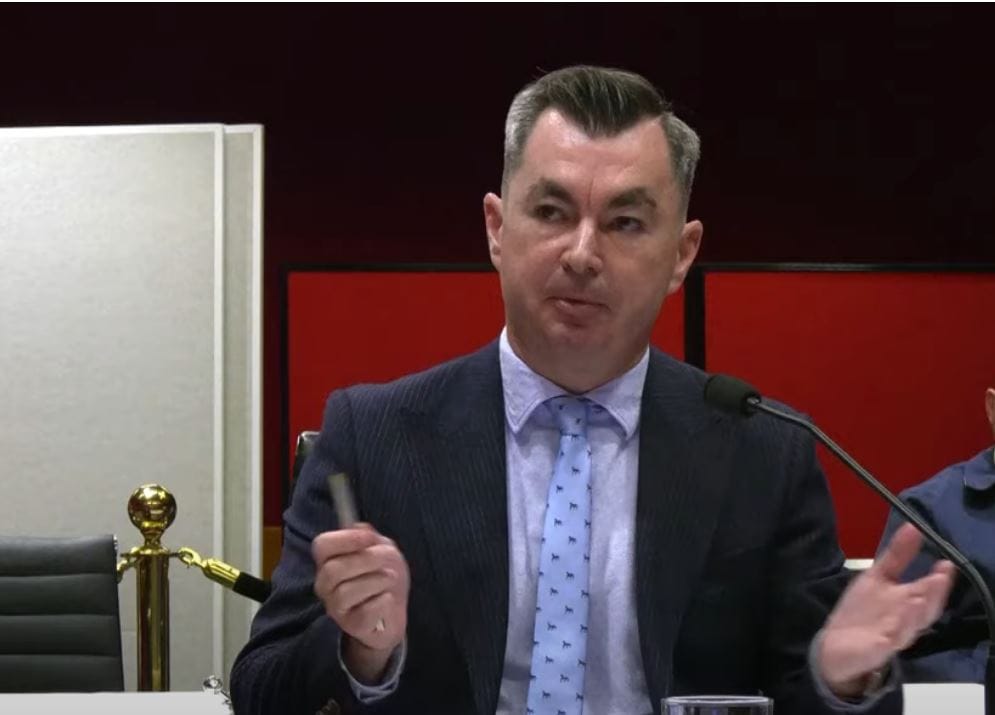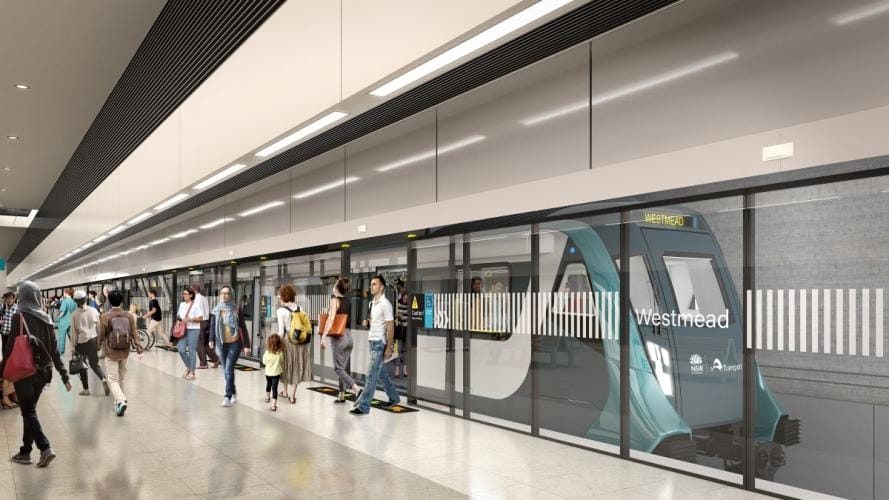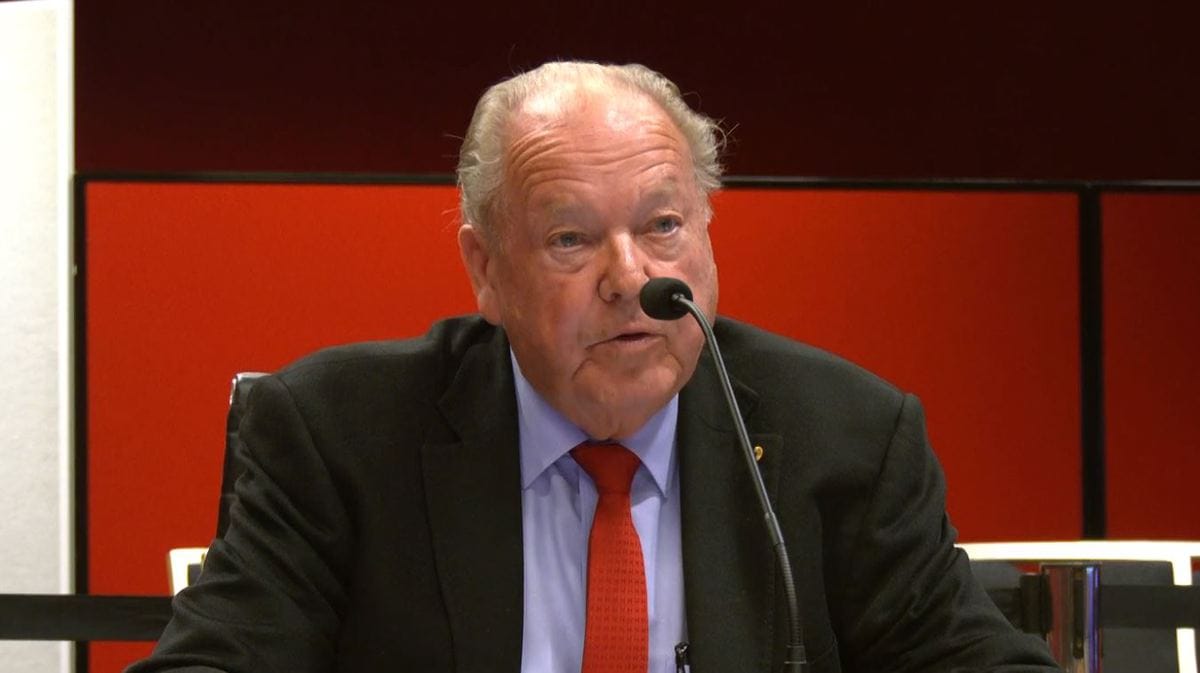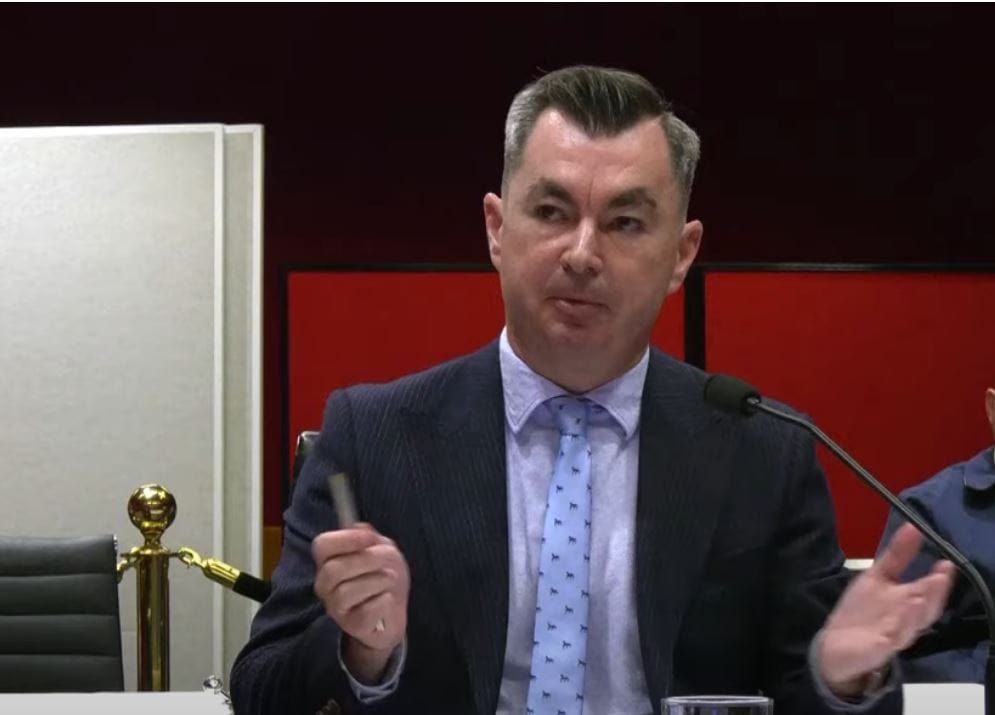The architect of the Australian Turf Club’s proposal to sell Rosehill, Steve McMahon, said he was told that 40,000 dwellings would need to be built on the site before it would be considered for a Metro Station.

It was the light bulb moment for the ATC’s head of corporate affairs and government relations - the moment when the idea of selling Rosehill crystalised in his mind.
The only problem is nobody recalls telling McMahon that figure.
McMahon is well-liked and well-connected. He and Premier Chris Minns served on the Hurstville City Council together and have been friends for 25 years.
McMahon met with the Premier on October 30 last year to inform him of the ATC’s new-found plans to close, redevelop and sell off Rosehill racecourse. Both men insist that it was McMahon’s role, not his friendship with Minns, that got him that meeting on four days’ notice.
That was backed up by Minns’ chief of staff, James Cullen, the third attendee at that meeting, who told the Rosehill parliamentary inquiry this week that it wasn’t unusual for the Premier to make himself available at relatively short notice.
The connection between Minns and McMahon has proved good fodder for those members of the Select Committee with a vested interest in at least embarrassing the Minns’ government over its handling of the Rosehill situation.
The ATC briefing was characterised as a ‘meet and greet’ in the Premier’s diary, despite Cullen saying he was informed that it was about an ATC initiative beforehand. Opposition MPs Damien Tudehope and Wes Fang probed Cullen over the connection between Minns and McMahon.
Cullen replied they were pursuing a conspiracy in search of a theory. The Premier knew nothing of the idea before the meeting and moved it down the correct channels expeditiously.
It all seemed like friendly parliamentary banter until Independent MP Mark Latham put the ICAC (Independent Commission Against Corruption) guidelines on the table.
ICAC is the body that undid the political careers of former premiers Gladys Berejiklian and Barry O’Farrell. It is the political bogeyman, the thought of which can keep premiers up at night.
As Cullen said, a meeting of two mates in a professional context over a mutual political matter is not evidence of anything underhanded. The fact that McMahon attended without CEO Matt Galenos and/or chairman Peter McGauran was seen as surprising by the previous ATC chairman Matthew McGrath, who also spoke to the Select Committee on Monday.
McMahon initially appeared before the Select Committee in August, detailing a brief meeting with the Premier and Cullen. He said that he was informed that he would be referred to the cabinet office to follow proper process and probity.
McMahon and Minns have always insisted the idea was generated from the ATC, fulfilling the criteria of it being unsolicited.
The background of McMahon’s involvement in the idea was his ongoing work for the ATC on the plans for the Camellia-Rosehill precinct around the edges of Rosehill racecourse.
It had been a slow-moving and painful process over the previous eight years, but with a bullish housing policy being spearheaded by Minns’ government, things suddenly gained momentum.
“In 2023 I had a number of meetings and discussions with stakeholders where it became clear that only increased housing density would make a metro station at this location feasible,” McMahon said.
“In August and October 2023 myself and members of the ATC property team had two key meetings where it was indicated and discussed that housing density would need to be of the order of 40,000 dwellings to justify a metro station.“
The two meetings took place on August 14 and October 25. The first, according to McMahon’s testimony, was with the independent metro audit review team, the second with the secretary of the Department of Planning.
He said these two meetings were key to him forming a view – afterwards - that the entire sale of Rosehill could achieve the metro station which made the project viable. The lightbulb switched on.
"We should at least look at this. How can we make this happen? Let's look at the numbers,” McMahon told the Committee.

He took these ideas to the chairman and the CEO of the ATC on October 26.
The issue is that the attendees at both these two prior meetings have both said a 40,000 dwelling figure was never discussed.
Sydney Metro, which had two of its staff attend the August 14 meeting, told the Rosehill inquiry in a written submission that it had not advised the ATC of a number of dwellings required, nor had it said that the entirety of Rosehill would need to be sold for there to be a Metro station.
Keirsten Fishburn, Secretary, Department of Planning, Housing and Infrastructure, told the Select Committee hearing on Monday she met with ATC officials on October 25 last year to discuss finalisation of a master plan for revitalising the Camellia-Rosehill area.
She said the idea to sell Rosehill for redevelopment was not discussed at the meeting and she only became aware of the proposal a day before it was announced on December 7.
In response to questioning about McMahon’s evidence to the inquiry that her department required the construction of 40,000 dwellings on the Rosehill to justify the delivery of a Sydney Metro station, Fishburn said that was never discussed.
“I've never said that nor heard that,” she said.
“And it wouldn't be my place to make that decision. That would be a question for Sydney Metro or the government themselves.
“I know I can't speak for everybody in planning, but I've never heard that 40,000 number before,” she said.
So where did the 40,000 number come from?
McMahon was asked this in follow-up questions from the Committee, which have been subsequently published.
Asked who at the August 14 meeting had suggested that “having a Metro station at Rosehill would significantly increase the rezoning and housing potential?”, McMahon said he couldn’t recall the names of specific individuals.
Asked for clarification about the October 25 meeting with the Department of Planning, McMahon said: “At that meeting, there was a general discussion with planning officials during which it was indicated that 40,000 dwellings would be needed to justify a metro station.
"They queried whether the ATC was open to redeveloping the entire site, including the racecourse."
McMahon told the Planning Committee at that time it wasn’t being considered as “it was the ATC’s position not to sell Rosehill Gardens”.
Within 24 hours, that position was being reconsidered, and within five days, it was being discussed with the Premier.

Given discussions over Camellia had been ongoing for eight years with little progress, the ATC had shown a sudden, remarkable turn of foot.
Exactly where this concept of 40,000 dwellings came from is an important aspect of the ATC’s plan. A number that large would require the entire site to be sold, not just non-core assets as had originally been suggested. It also increased the potential commercial value of the project for the ATC and the political value for the government.
It was a game-changer.
You may recall when the Rosehill idea was announced on December 7, the number of dwellings for the $5 billion project was 25,000.
In the six weeks between the discussions with the Premier and a much-heralded ‘once in a lifetime’ press conference with Minns and McGauran, a few details had changed.
But in the intervening nearly 12 months, McMahon remains steadfast he was told about that 40,000 figure. It is somewhat of a mystery.
The metro matters to Rosehill because in the words of McGauran:
“If there wasn't the metro station we wouldn't be having this discussion.”
“Rosehill Gardens would never be sold because it wouldn't realise the significant funds which would allow us to address some of the challenges I've outlined.”
The metro tunnel will progress under Rosehill in the next few months. Without any certainty over the Rosehill proposal, the tunnel machines will keep going, with a station unlikely to be built before 2032.
Since the Rosehill proposal became public, Sydney Metro have re-aligned the tunnels slightly to ensure there is a suitable flat and straight space to accommodate platforms in the future.
A space for a metro station that may never be built under a racecourse that may never be sold.
And a year after McMahon’s lightbulb moment, we are no closer to knowing what the future may hold.








